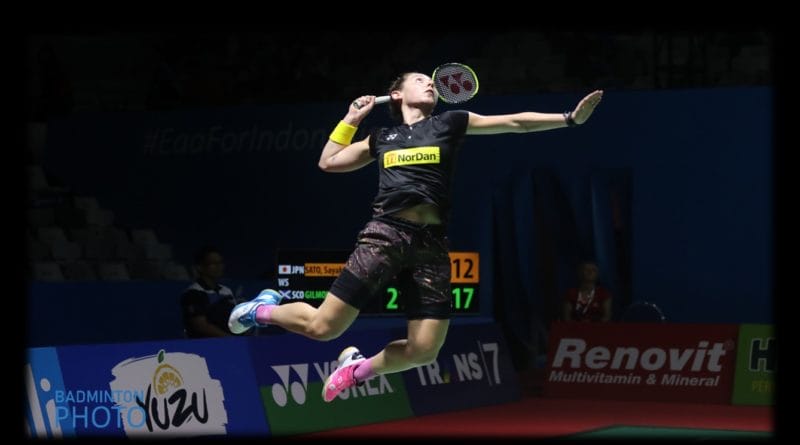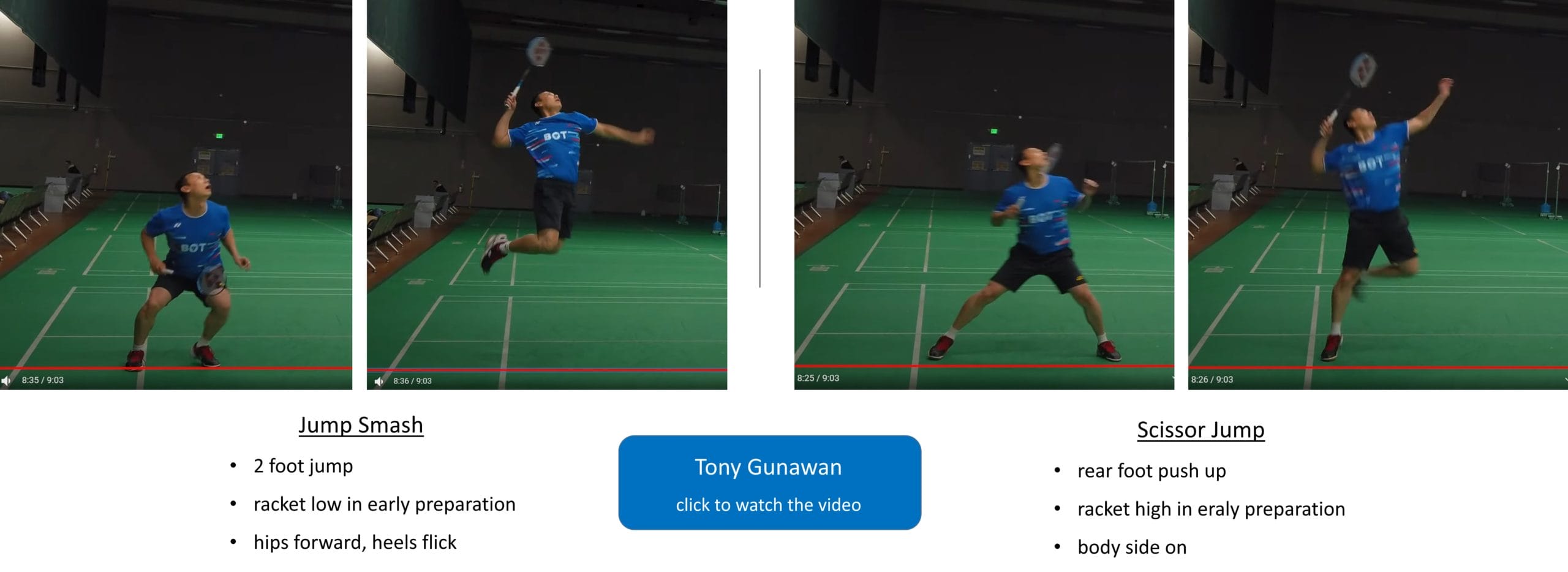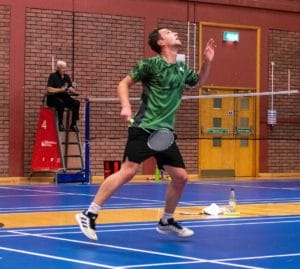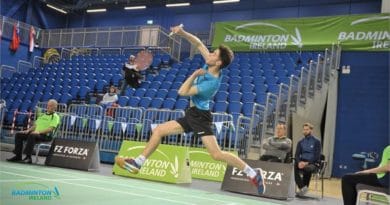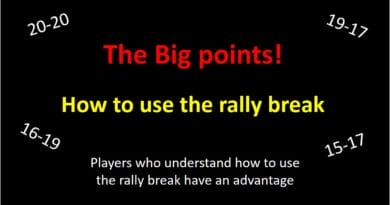6 ways to improve your jump smash
Is there a secret to a great jump smash?
What can you do to develop your jump smash, get higher and hit harder?
How should you start, progress and what do you need to do in practice?
You will need to do some things differently if you are to achieve maximum height
These 6 pointers will hopefully help you
-
- Understand the different techniques to harness your power
- Know the crucial images to have in your mind
- Compare this advice to that of 2 World Champions
There are very few quick fixes, but there are some essential things that you should be doing to jump higher and hit with power
– – – – – – – – – – – – – – – – – –
1. Where and when to start (plus the essential components)
2. The Preparation : your take off stance
3. The Preparation : your racket position
4. What to do in the air
5. Squeeze your grip
6. Watch and listen to Peter Rasmussen a World Champion
– – – – – – – – – – – – – – – –
1. Where and when to start
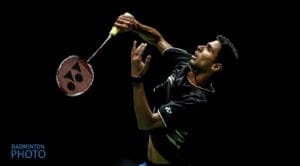
The good news is that everyone has the ability to get off the ground and hit the shuttle.
The bad news is that the height you gain and what you are capable of doing in the air will vary.
Some of you will already have the components required to jump smash, others will need time and training, then the rest of us may need a miracle to jump like an expert.
I believe that everyone should be encouraged to “push up” off the court when smashing. You should be encouraged from an early age to “get off the ground when smashing”. If you want to know more about how to develop a great “normal” smash then click on this link or image.
However, there are some critical differences (technical things) between jump smashing and just being off the ground when hitting overheads
The essential early components for novice players
Here is a shortlist of essential components that will help your smash and build a platform for a future jump smash
- At the start of hitting overheads, you should be encouraged to “get off the ground”. The height is not important, in fact, there should be no mention of height.
- Players should be encouraged to load their back leg. This can be by pushing into the court, allowing the front leg to come off the ground, or (probably the best way) by encouraging a “pull-down of the elbow“. This is NOT the postion that your feet will be in for a Jump Smash. Look at the picture below and try to spot the differences.
- Get used to having wide legs just before take-off, wider than shoulder-width. However, they don’t have to be as wide as some of the times you prepare for a Round the Head.
- Get used to being side-on in preparation. It is easier if you are asked to “look past your front arm, at the opponent”. Try this now and see what happens to your shoulders 🙂
- Develop a “backward running” movement after playing a net shot. This running type movement will help you prepare your legs. Not everything needs to be a chasse when moving.
Where to start
- In warm-ups use single-step shadow work. Emphasise a powerful push-up and rotate with the throw. A BIG throw is ok 🙂
- Practice your overheads in the Backhand court. If you want to know why I think that there are many advantages to this, click here and read this advice.
- Develop great Round The Head strokes from a quick wide feed. Something that makes you get off the ground.
- When doing your physicals training incorporate 2 footed jumps with and without rotation.
– – – – – – – – – – – – – – – – – – – – – – – – – – –
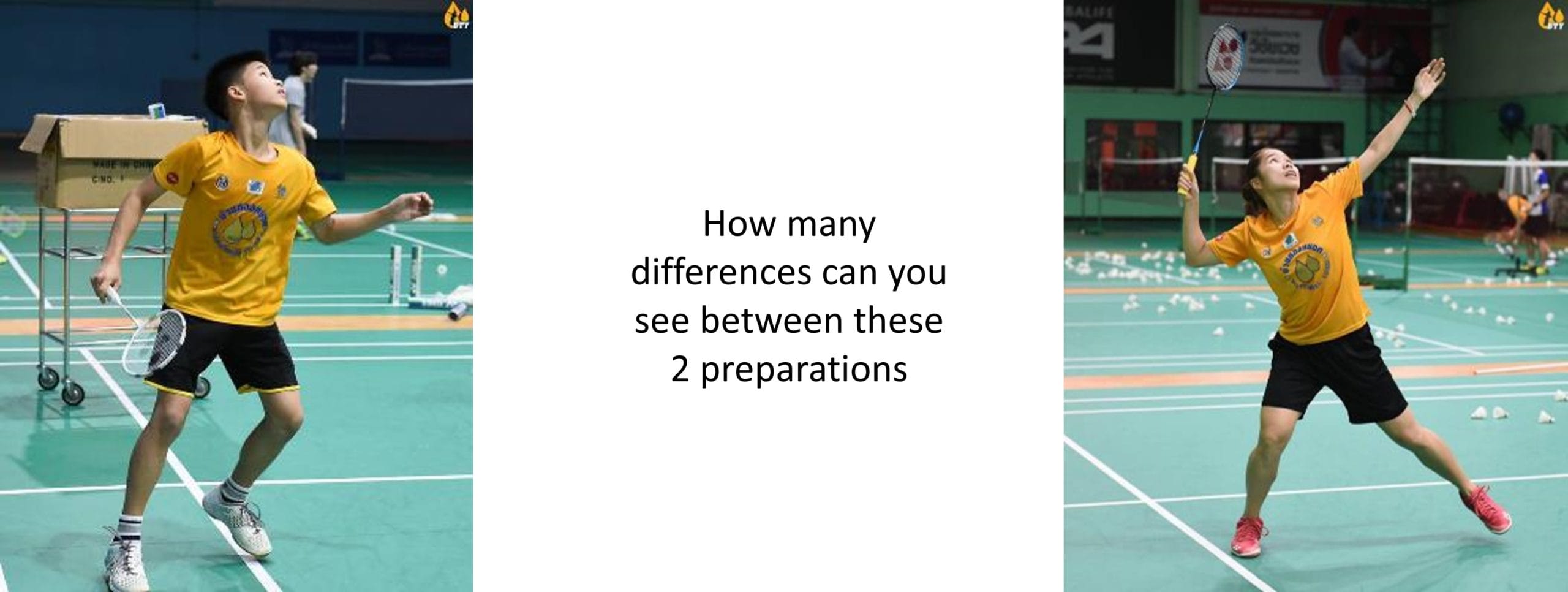
When developing a vertical jump smash you will need to be ready to change some of your techniques.
– – – – – – – – – – – – – – – –
2. The Preparation : your take off stance
This advice may be different from what you have been told.
It may even come as a shock to you, but hopefully, you’ve been experimenting with what works and what doesn’t, I hope so.
The take-off stance for a great jump smash may not be the same as you’ve been using
A coach can help, but most of the things to try are easy to see on YouTube. Ensure that you are watching players in real matches as some coaching videos may not give you the information you need.
Your take-off stance
Look at these pictures and tell me if you agree with these points
- Both legs are used to generate the power, not just the rear leg
- The width of the stance is not as wide as you may have been using
- The movement backward into this stance is more often with a running (walking) style rather than a chasse
- There is certainly a pause, a moment when everything is aimed at pushing into the ground to explode vertically
- “Sink to explode!”
Have you tried moving backwards and sinking (the feeling) into the court with both feet before exploding upwards?
– – – – – – – – – – – – – – – –
3. The Preparation : your racket position
As with the take-off stance advice, you may find this advice about your racket position different from the position you are currently using for your overheads.
It may even come as a shock to you, but hopefully, the pictures in this post and the players you watch on YouTube will convince you to at least try it out.
In preparation, your racket will move much lower than you may realise.
It’s likely to be as low as your waist height
It’s vital that before you start your jump, your racket is “pulled” downwards. This is essential to load your legs!
To move backward with your racket around your head height in a classic overhead position that will limit the vertical height you can achieve. If you are encouraged to keep your racket in this higher early preparation position then why not experiment with the pulling down of the racket. Please let me know how it feels.
Alternately, don’t just take my advice, jump to the end of the post and watch the video from Peter Rasmussen.
The pulling down of the racket is essential
You could move with the racket held high but I doubt that you will achieve the same vertical height. Or crucially, you will not get that explosive feeling when you jump.
– – – – – – – – – – – – – – – –
4. What to do in the air
 Once you get into the air I recommend that you try these ideas
Once you get into the air I recommend that you try these ideas
- Keep your shoulders facing the side of the court
- Imagine flicking your heels upwards. The picture, the image you have in your head is important
- At the same time, think about bringing your heels up, quickly turn your hip forward and square to the net
- At this stage, your racket will be somewhere around your head height, possibly behind your head, prepared to throw
- Start your throw, feel the tension in your torso (especially your stomach), allow your legs to straighten as you deliver that awesome smash power
The turning and pushing your hip forwards which will create the heel flick
Both these movements are the key to producing power
– – – – – – – – – – – – – – – –
5. Squeeze your grip
 The advice on grips varies, I have heard a few different descriptions of how to hold and how hard to hold the racket.
The advice on grips varies, I have heard a few different descriptions of how to hold and how hard to hold the racket.
I recommend thinking about “squeezing the fingers” together just before impact. This will close the gaps between the fingers and cause the thumb to slip downwards towards the fingers. Your grip may look strange if you do it now, however it will deliver the power that you need!
The timing and amount of “squeezing” will need to be practiced. It is not holding it as hard as you can, but it may be tighter than you imagine
The position of the hand can also be varied. Some of the most powerful smashes I have seen use a slightly “panhandle” grip. Please don’t reject this idea until you have experimented on court.
– – – – – – – – – – – – – – – –
6. Watch and listen to Peter Rasmussen a World Champion
This is a great way to improve your jump smash. Not only can you watch Peter Rasmussen you can listen to his advice.
The 2nd video has slightly more technical detail than the first. However, both are excellent examples of what actually happens in a real game.
The movements are powerful and fluid, and there are plenty of examples. Each video is only 6 min long.
If you like to watch Peter in action then I’d recommend that you take time to watch the final of Men’s Singles from the 1997 World Championships. Click here to watch.
– – – – – – – – – – – – – – – – – – – – – – – – – – –
Summary
.. To achieve maximum height, both legs must be used
.. Have a solid base prior to jumping
.. “Sink to Explode”
.. Racket arm travels DOWN then UP!
.. Push your hips forwards to flick your heels up
.. BOOM!

